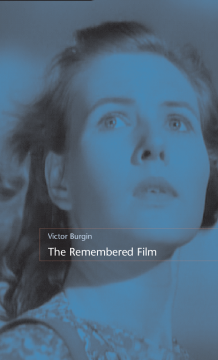
Additional Information
Book Details
Abstract
Most books about cinema, whether popular or academic, concentrate on what we might call the "inside" of the film: from star performances to narrative structures. The relatively few books about the "outside" of films speak mainly of such aspects of production and reception as the organization of the film industry and the sociology of audiences: the Hollywood studio system, for example, or fan clubs. The Remembered Film is unique in addressing a previously overlooked aspect of cinema: the isolated fragments of films, iconic images or scenes, that fleetingly cross our perceptions and thoughts in the course of everyday life.
Victor Burgin examines a kaleidoscope of film fragments drawn from a variety of media, the internet, memory and fantasy. Among these are sequences of such brevity they might almost be stills. Such "sequence-images", as Burgin calls them, are neither strictly "image" nor "image sequence" and have not been considered before by either film or photography theory. He also considers some typical individual experiences "sampled" from mainstream cinema. He reflects on such disparate occurrences as the association in memory of fragments from otherwise unrelated films, of the relation of a recollected film image to an architectural setting, or of a feeling "marked" by an image remembered from a film.
The Remembered Film provides a radical new way of thinking about film outside conventional cinema, and in relation to our everyday lives. It will appeal to a wide audience interested in film and media.
"Victor Burgin takes the idea of the remembered or shared film rather differently, bringing it outside the auditorium and into the 'cinematic heterotopic': our image-saturated world"
— Emilie Bickerton, The Times Literary Supplement (TLS)
"Burgin explores the impressionistic qualities of cinema and how, in
recollection, the viewer relates to image: exploring how memory and
circumstance place certain sequences in our psyches, the overwhelming beauty
of certain images and sequences becoming larger than the bodies of work
they¹ve hailed from . . . Burgin's art swoon is nearly as tempting as some
of the beauty he finds in small, strange places."
— i-D Magazine
Artist and writer Victor Burgin is Millard Chair of Fine Art at Goldsmiths College, University of London, and Professor Emeritus of History of Consciousness at the University of California. His theoretical works include In/Different Spaces (1996), The End of Art Theory (1986) and Thinking Photography (1982), and monographs of his visual work include Some Cities (Reaktion, 1996) and Relocating (2002). His photographic and video works are represented in major museum collections worldwide.
